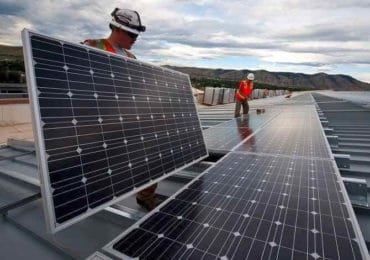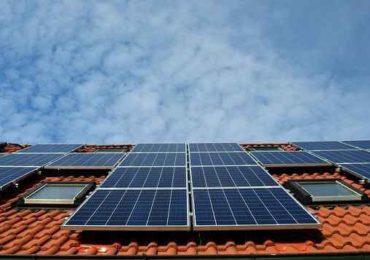Urbanization and economic development are leading to a rapid rise in energy demand in urban areas in our country leading to enhanced Greenhouse Gas (GHG) emissions. Growing concern over climate change and energy security are prompting public and private actors to make concrete long term commitments at the national and local levels to increase energy conservation, energy efficiency and the use of renewable energy (RE).
Solar City Plan
The term “Solar cities” defined by several initiatives such as International Solar cities Initiatives and European Solar cities initiatives also include a “climate-stabilization” aspect, whereby cities responsibly set per-capital targets for future greenhouse-gas emissions at levels consistent with stabilizing future levels of atmospheric carbon-dioxide and other greenhouse gases and also includes introduction of greenhouse gas emissions reduction over long term time frame.

Some important terms used in Renewable Energy Planning ( Focus on Solar Energy)
- Renewable Energy : Renewable energy is generally defined as energy that comes from resources which are continually replenished on a human timescale such as sunlight , wind, rain, tides, waves and geothermal heat.
- Solar Energy: Electromagnetic energy transmitted from the sun (solar radiation). The amount that reaches the earth is equal to one billionth of total solar energy generated, or the equivalent of about 420 trillion kilowatt-hours. Solar energy, radiant light and heat from the sun, is harnessed using a range of ever-evolving technologies such as solar heating, solar photovoltaics, solar thermal electricity, solar architecture and artificial photosynthesis. Solar technologies are broadly characterized as either passive solar or active solar depending on the way they capture, convert and distribute solar energy. Active solar techniques include the use of photovoltaic panels and solar thermal collectors to harness the energy. Passive solar techniques include orienting a building to the Sun, selecting materials with favorable thermal mass or light dispersing properties, and designing spaces that naturally circulate air.
- Photovoltaics (PV) : It is a method of generating electrical power by converting solar radiation into direct current electricity using semiconductors that exhibit the photovoltaic effect. Photovoltaic power generation employs solar panels composed of a number of solar cells containing a photovoltaic material. Materials presently used for photovoltaics include monocrystalline silicon, polycrystalline silicon, amorphous silicon, cadmium telluride, and copper indium gallium selenide/sulfide. Due to the increased demand for renewable energy sources, the manufacturing of solar cells and photovoltaic arrays has advanced considerably in recent years.
- Solar Park: A solar park, is a large-scale photovoltaic system designed for the supply of merchant power into the electricity grid. They are differentiated from most building-mounted and other decentralised solar power applications because they supply power at the utility level, rather than to a local user or users. They are sometimes also referred to as solar farms or solar ranches, especially when sited in agricultural areas.
- Solar Maps: A solar map is an internet-based tool that helps educate and inform users about solar technology by estimating the solar energy potential of building sites or open land and providing information about associated benefits. The purpose of a solar map is to promote greater public awareness about solar energy, enable consumers to discover the solar potential of their own properties, and facilitate increased solar usage among property owners. A solar map can serve as a single place to store complete information on solar resources. Like the concept of a “one stop shop” for permitting, solar map portals can store all federal, state, and local information regarding available solar incentives and programs. Solar maps are user-friendly, allowing users to make quick and easy assessments of the solar potential of their properties.
- Solar Access: Solar access is the ability of one property to continue to receive sunlight across property lines without obstruction from another’s property (buildings, foliage or other impediment). Solar access is calculated using a sun path diagram. Solar access is differentiated from solar rights or solar easement, which is specifically meant for direct sunlight for solar energy systems, whereas solar access is a right to sunlight upon certain building façades regardless of the presence of active or passive solar energy systems.
- Solar Easements: A solar easement is a right, expressed as an easement, restriction, covenant, or condition contained in any deed, contract, or other written instrument executed by or on behalf of any land owner for the purpose of assuring adequate access to direct sunlight for solar energy systems.

Task of performing complete assessment depending on location can be carried out individually but taking help of professional service such as solar installation companies in CT helps in obtaining maximum profit. This not only helps economically but also helps in obtaining more efficiency and reducing carbon footprint.
Ways for adopting large scale use of Master Plan – Comprehensive Plan / Master Plan
Communities adopt local plans in order to chart courses for more sustainable and livable futures. While planners help towns and cities prepare a wide range of communitywide, subarea, and functional plans, the most significant of these is the local comprehensive plan. The comprehensive plan, sometimes referred to as the general plan or the master plan, is the foundational policy document for local governments. In many ways it functions like a community constitution, establishing a framework for future growth and change within the jurisdiction to be implemented through local laws and public investments over the next 20–25 years.
Comprehensive plans are named as such because they cover a broad range of topics of community wide concern. All states require local governments to prepare comprehensive plans, and require local development regulations to be in conformance with an adopted comprehensive plan. Common topics for plan elements (i.e., chapters or major sections) include land use, transportation, housing, economic development, and community facilities. In recent years an increasing number of cities and counties all across the world have added elements addressing sustainability, natural resources, or energy to their comprehensive plans.

While there are numerous local sustainability, climate action, and energy plans that incorporate goals, policies, and actions related to promoting renewable energy, these plans seldom hold the same statutory authority as the comprehensive plan. Therefore, communities should incorporate relevant policies and action items from these functional plans into the comprehensive plan. This may involve incorporating functional plans into the comprehensive plan by reference, or it may mean updating specific sections of the comprehensive plan to reflect new community priorities.
Given the importance of the comprehensive plan in the local planning system, it represents a logical point to introduce renewable energy related goals and objectives in the context of the wider local policy framework. This gives plan authors a chance to highlight synergies and potential conflicts between RE and other community resources and to summarize any previous, ongoing, and planned policies and actions to support the implementation of goals related to promoting RE use.